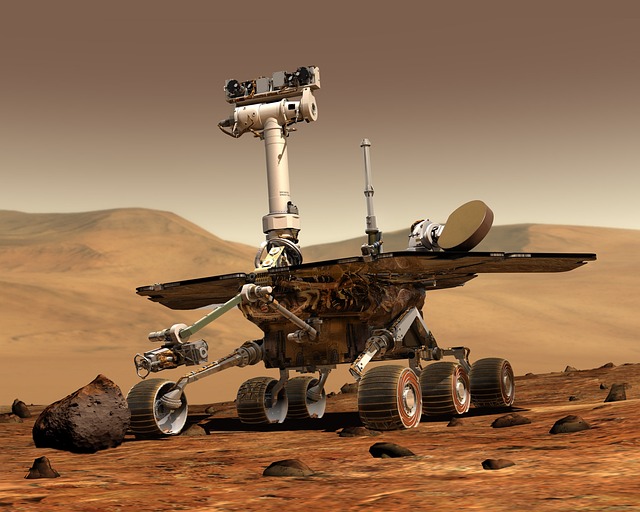Space exploration has always been a frontier of innovation, and today, AI is revolutionizing how we explore the cosmos. From analyzing vast amounts of astronomical data to guiding autonomous space missions, AI tools are playing a crucial role in expanding our understanding of space. Paid AI tools, in particular, provide advanced features that enable researchers, scientists, and engineers to push the boundaries of space discovery even further. These tools help optimize data analysis, mission planning, and real-time decision-making for space exploration initiatives.
Paid AI Tools for Space Exploration and Discovery
In this blog post, we will explore the top 10 paid AI tools that are transforming space exploration. These tools are used by leading space agencies, researchers, and organizations to accelerate discovery and innovation.
1. SpaceNet
SpaceNet is an AI-powered platform designed to analyze satellite imagery and help with geospatial applications. It uses deep learning algorithms to detect objects like roads, buildings, and land use patterns in high-resolution satellite images. This capability is crucial for monitoring Earth’s surface, identifying changes over time, and supporting space missions focused on Earth observation.
The tool’s ability to process massive amounts of data quickly makes it an invaluable resource for space agencies and research institutions working with satellite data. SpaceNet’s AI algorithms enable users to gain insights from satellite imagery that would otherwise take much longer to analyze manually.
2. AstroML
AstroML is a machine learning library developed specifically for astronomy and astrophysics. It includes tools for analyzing large datasets, performing time-series analysis, and building predictive models based on astronomical data. AstroML is widely used by astronomers to classify celestial objects, study galaxy formations, and analyze astronomical surveys.
This AI tool enables scientists to process vast amounts of data more efficiently, helping them make discoveries faster and with greater accuracy. AstroML’s focus on astronomy ensures that its algorithms are optimized for the unique challenges faced in space exploration research.
3. Google AI for Space
Google AI provides tools that assist space agencies in everything from analyzing space data to developing AI-powered space missions. Google’s TensorFlow and AutoML platforms are particularly useful for building custom machine learning models that can predict satellite trajectories, analyze celestial images, and simulate space environments.
Researchers and space agencies benefit from Google AI’s cloud-based infrastructure, which allows them to scale their AI projects without worrying about computational limitations. The flexibility and power of Google AI make it an essential tool for space exploration.
4. DeepMind’s AlphaFold
DeepMind’s AlphaFold, known for its breakthroughs in protein folding, is also being explored for applications in space biology. The tool can predict the structure of proteins that may exist in extreme environments, like those found on other planets or moons, giving scientists insights into the possibility of extraterrestrial life.
By simulating the behavior of proteins in unknown environments, AlphaFold helps researchers understand how life might evolve outside Earth. This AI tool opens new possibilities for astrobiology and the search for life in space.
5. IBM Watson for Space
IBM Watson offers AI solutions that are being applied to space missions in areas like data analysis, mission planning, and autonomous navigation. Watson’s machine learning algorithms are used to analyze data from space telescopes, monitor satellite health, and optimize spacecraft operations.
Watson’s ability to process vast amounts of data and provide actionable insights makes it an indispensable tool for space agencies. It enables real-time decision-making, ensuring that missions run efficiently and safely, even in the most challenging environments.
6. PAIGE AI
PAIGE AI is traditionally used in healthcare, but its machine learning algorithms have found applications in space exploration, particularly in the study of planetary geology. By analyzing geological formations, PAIGE AI helps scientists identify mineral compositions and geological features on other planets.
This AI tool is particularly valuable for missions like Mars exploration, where understanding the planet’s geology is crucial for identifying potential resources and studying its history. PAIGE AI’s adaptability across different fields makes it a powerful tool for space discovery.
7. Hubble AI
Hubble AI focuses on enhancing the capabilities of space telescopes like the Hubble Space Telescope by automating data analysis. It uses deep learning models to identify and classify celestial objects, allowing researchers to quickly find new stars, galaxies, and other phenomena.
This AI tool speeds up the process of discovering celestial bodies, helping astronomers maximize the use of telescope time. By reducing the manual work needed to analyze vast datasets, Hubble AI allows scientists to focus on making groundbreaking discoveries.
8. OpenAI’s GPT for Space Missions
OpenAI’s GPT, known for its language processing capabilities, is being explored for applications in space mission control. The AI model can assist with real-time communication, automate spacecraft instructions, and analyze mission data to provide insights that help decision-makers on Earth.
OpenAI’s GPT’s versatility allows it to handle both structured and unstructured data, making it a valuable tool for space agencies looking to improve mission efficiency. Its ability to process large volumes of data in real time makes it an essential component of modern space exploration efforts.
9. ExoAI
ExoAI is a tool designed for analyzing exoplanet data. It uses machine learning to identify potential exoplanets in vast datasets collected from space telescopes. ExoAI’s algorithms are trained to detect subtle signals in astronomical data, helping astronomers discover new planets that may host life.
The tool’s focus on exoplanet discovery makes it a specialized resource for space researchers. By accelerating the identification process, ExoAI is helping scientists explore new frontiers in the search for habitable worlds beyond our solar system.
10. NASA’s Frontier Development Lab (FDL)
NASA’s FDL is an AI research initiative that brings together AI experts and space scientists to solve challenges in space exploration. It uses AI to analyze astronomical data, predict solar storms, and simulate space environments for future missions. FDL’s projects have led to advancements in areas like asteroid detection, planetary defense, and space weather forecasting.
FDL’s AI-driven approach accelerates research and development for NASA and other space agencies, making it an essential hub for space exploration innovation. Its use of AI tools ensures that space missions are safer, more efficient, and more successful.
Conclusion
AI is playing an increasingly important role in space exploration and discovery, offering tools that enhance data analysis, mission planning, and the search for extraterrestrial life. Tools like SpaceNet and AstroML are revolutionizing how we process satellite imagery and astronomical data, while AI platforms like Google AI and IBM Watson are helping to optimize space missions. As AI continues to evolve, its integration into space exploration will only deepen, driving more discoveries and pushing the boundaries of what we can achieve in the final frontier.






